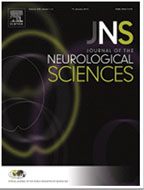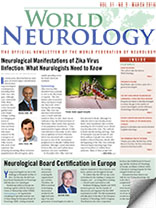By John D. England, MD
Editor-in-Chief

John D. England
The Journal of the Neurological Sciences will soon feature a section devoted to global neurology. We have seen a significant increase in the number of high quality submissions from around the world, and many of these address important issues in regions beyond the traditional high-income countries. In this new section, we will profile original research, topical reviews and commentaries that address important regional and global neurological topics. We extend a special invitation to individuals who are working in or collaborating with neurologists or scientists in lower or middle-income countries. Dr. Donald Silberberg will edit the global neurology section. Dr. Silberberg is ideally suited to edit this section. He is currently emeritus professor of neurology, and he served as chair of neurology (1982-1994) and senior associate dean for international programs (1994-2004) at the University of Pennsylvania Perelman School of Medicine. He is an associate editor for the Journal of the Neurological Sciences and is the retiring editor for World Neurology. Dr. Silberberg is dedicated to improving neurological care in developing countries. His expertise in the global community is a great asset to the World Federation of Neurology and the Journal of the Neurological Sciences. Authors who wish to submit manuscripts for this new section should use the Elsevier Editorial System and follow the instructions for authors.
In our ongoing attempt to enhance accessibility of JNS articles to members of the World Federation of Neurology (WFN), we have selected two more “free-access” articles, which are profiled in this issue of World Neurology.
 1) Ivana Vodopivec, et al. provides a glimpse of the heterogeneity of patients with Susac syndrome. Susac syndrome is a rare disease, which is usually characterized by a triad of encephalopathy, visual disturbances and hearing loss attributed to a pauci-inflammatory vasculopathy of the brain, eye and inner ear. However, at initial presentation, none of the five patients in this case series demonstrated the complete triad, and diagnosis was difficult and delayed. The authors provide two important conclusions: a) Microinfarcts were noted on MRI diffusion weighted imaging (DWI) of the brain, as well as branch retinal artery occlusions and vessel wall hyperfluorescence on fluorescein angiography in all patients with acute encephalopathy, and b) glucocorticoid and IVIg treatments were insufficient in halting the disease in patients with severe encephalopathy. Additional immunosuppressive treatment was required.
1) Ivana Vodopivec, et al. provides a glimpse of the heterogeneity of patients with Susac syndrome. Susac syndrome is a rare disease, which is usually characterized by a triad of encephalopathy, visual disturbances and hearing loss attributed to a pauci-inflammatory vasculopathy of the brain, eye and inner ear. However, at initial presentation, none of the five patients in this case series demonstrated the complete triad, and diagnosis was difficult and delayed. The authors provide two important conclusions: a) Microinfarcts were noted on MRI diffusion weighted imaging (DWI) of the brain, as well as branch retinal artery occlusions and vessel wall hyperfluorescence on fluorescein angiography in all patients with acute encephalopathy, and b) glucocorticoid and IVIg treatments were insufficient in halting the disease in patients with severe encephalopathy. Additional immunosuppressive treatment was required.
2) Kristin Galetta and Don Gilden provide a well-written and comprehensive review of varicella zoster virus (VZV). This article covers the history, protean clinical presentations, prevention/vaccination and future directions for research. I believe that this article is a must read for any clinical neurologist. K.M. Galetta, D. Gilden, Zeroing in on zoster: A tale of many disorders produced by one virus, J. Neurol. Sci. 358 (2015) 38-45.
